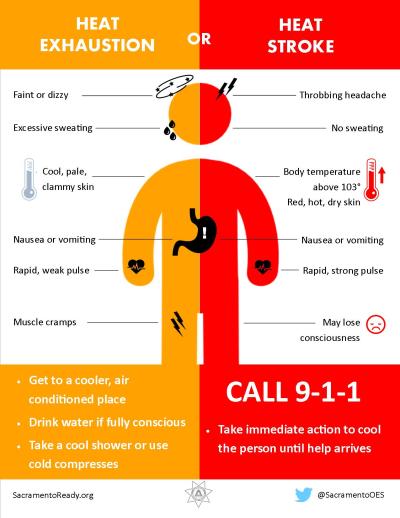Heat Stress
High temperatures and high humidity combined with other risk factors can limit the body's ability to cool down. When the body retains more heat than it can release, protective mechanisms can be overwhelmed resulting in heat exhaustion or heat stroke, types of heat-related illness (HRI). In Western Washington's mild climate, conditions that could lead to HRI do not occur often, but this means that people are less acclimated and less prepared for these conditions when they do occur. See the chart below for more specific information about high temperature and high humidity ranges where HRI may be a risk.
|
Heat Index (temperature + humidity) |
Risk Level | Protective Measures |
|---|---|---|
| Less than 91° F (32.7° C) | Low (use caution) | Basic heat safety and planning |
| 91°F - 103°F (32.7° C - 39.4 ° C) | Moderate | Implement precautions and heighten awareness |
| 103°F - 115°F (39.4°C - 46.1° C) | High | Additional precautions to protect workers |
| Greater than 115°F (46.1° C) | Very high to extreme | More aggressive cooling and protective measures required |
To protect against heat related illness remember: Rest, Shade, Hydration. Good hydration is best accomplished by drinking water before starting the day and often throughout the day, not just when thirst is present. It is also important to give the body a chance to recover from the effects of heat by taking designated breaks in a cooler place, like a shaded area. Other methods, such as increasing air flow through the use of fans, can be helpful for the body to cope with the effects of heat.

